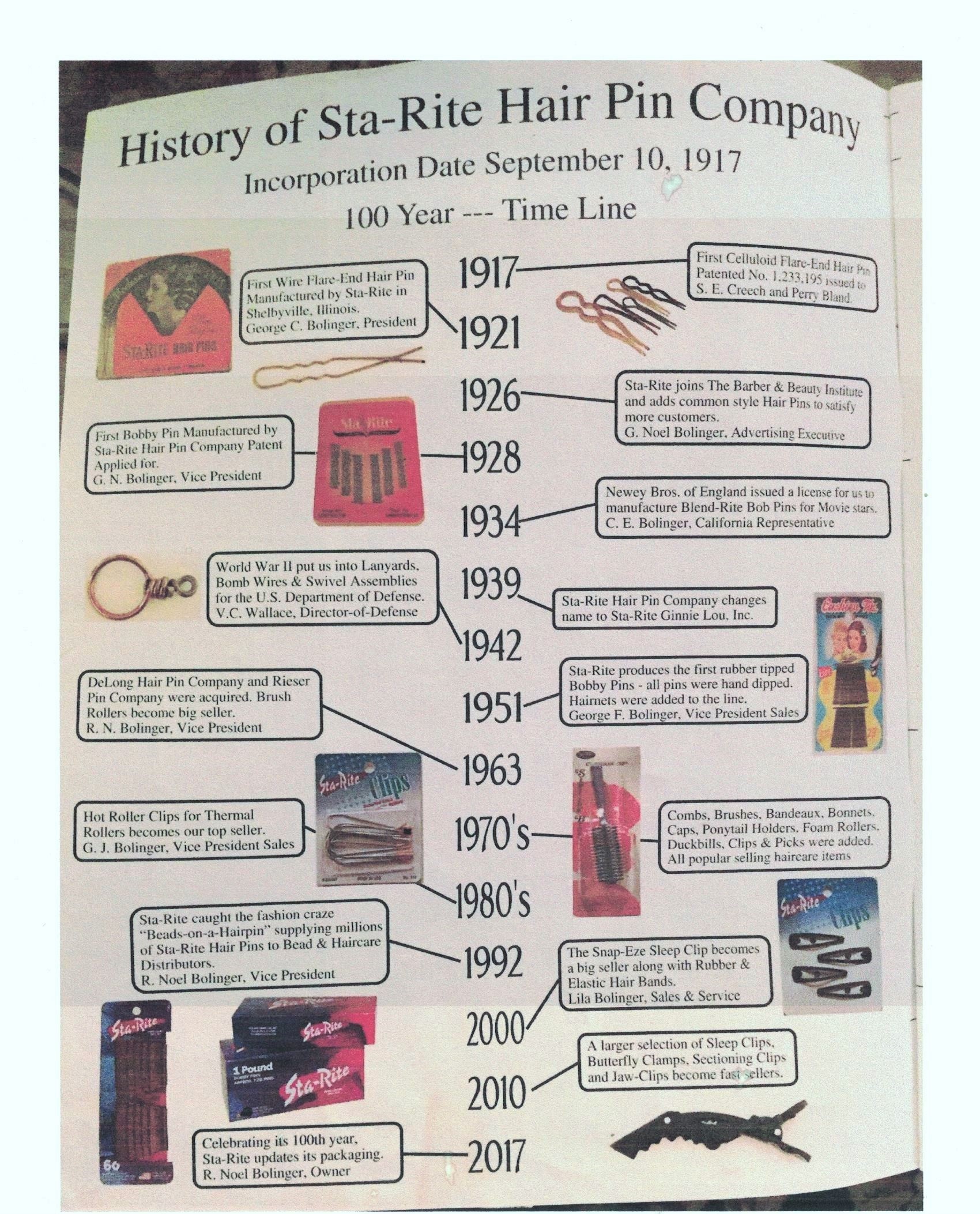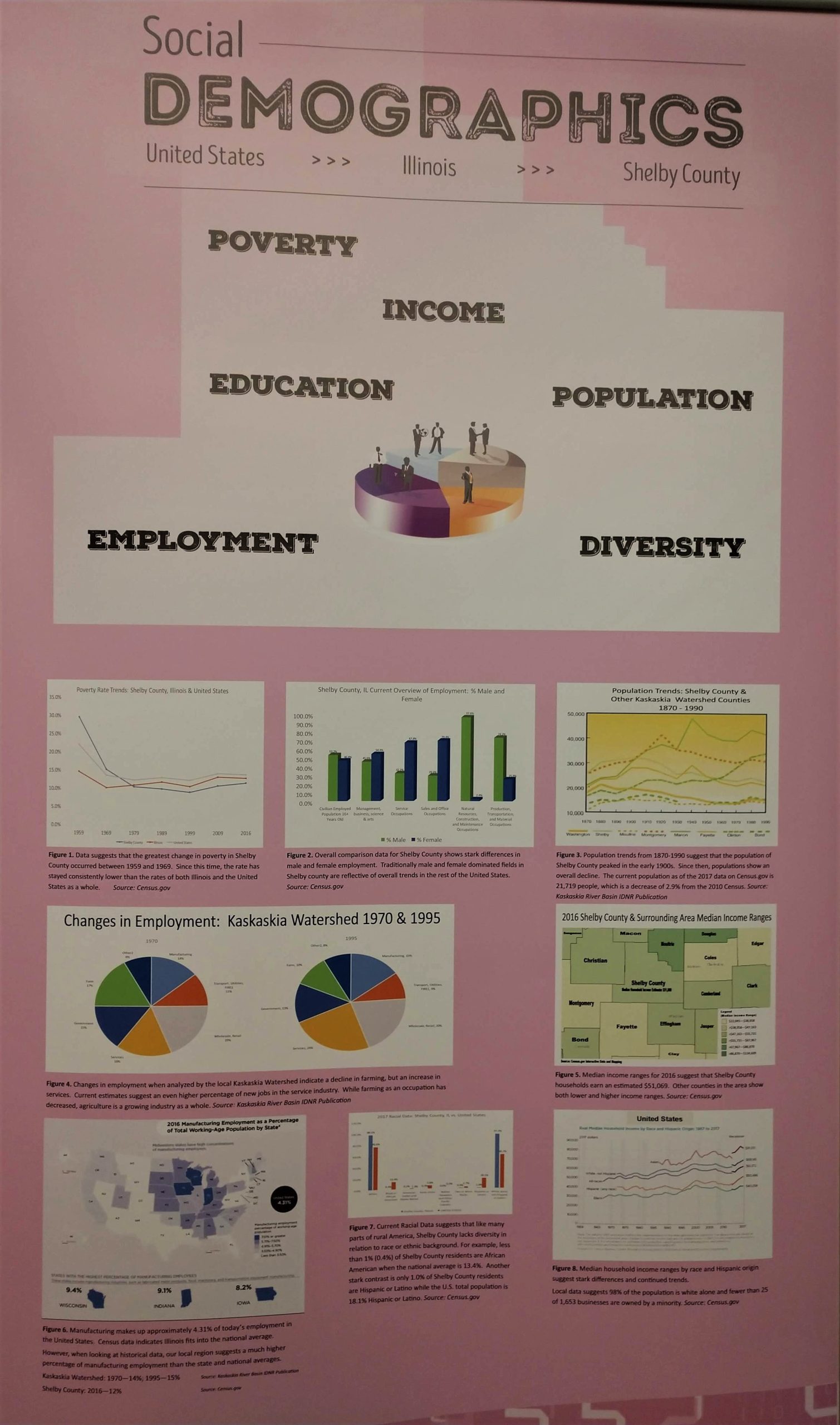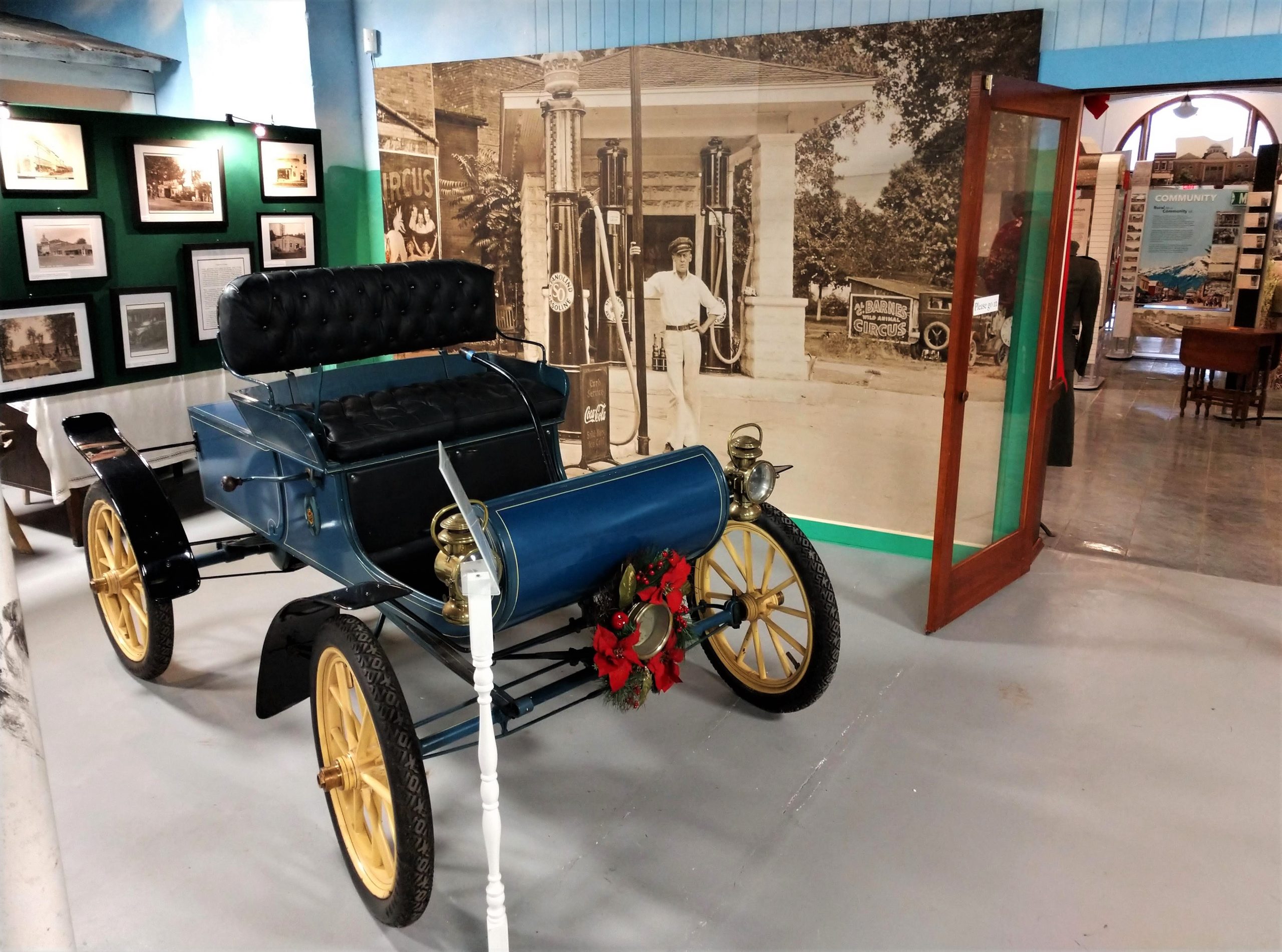Chapter 7: Moving Materials, Goods, People, and Money
Several of our state’s Crossroads: Change in Rural America host organizations examined the transportation networks that connect rural Illinois with the world beyond it and link its evolution with those of the broader socioeconomic formations of which it is a part.
Public infrastructure of a different kind has contributed significantly to the economy of another community that hosted Crossroads. The Shelbyville Industrial Rail Spur, developed in 1982, consists of a two-mile section of track that was owned by Conrail and intersected with the Missouri Pacific (now Union Pacific) railroad. Conrail abandoned it, forcing local manufacturers who had relied on it to find other methods of hauling raw materials to and finished products from their plants. Following negotiations by local and federal officials, including US Rep. Paul Findley, the Conrail corporation agreed to sell the section of track to the City of Shelbyville, enabling the industrial facilities to remain connected to the Missouri Pacific.[1]

Firms that continue to benefit from the availability of the spur include P & H Manufacturing, Graphic Packaging International, and Sta-Rite Ginnie Lou, which has manufactured hair-care accessories, such as bobby pins, since 1917. (Sta-Rite Ginnie Lou is not quite old enough to have manufactured the hairpins that Joseph Glidden supposedly used in making the prototype of his version of barbed wire, but it is impressively long established, nonetheless.)

Brenda Elder of the Shelby County Bicentennial Committee noted that the rail spur has been significant in enabling Shelbyville to retain such businesses in the absence of major highways and navigable rivers.[2] (The section of the Kaskaskia River adjacent to Shelbyville is not conducive to commercial navigation.)

The community, in fact, has maintained a notably strong manufacturing sector in an era when manufacturing has been declining in many small towns and even in larger cities in the Midwest. Sarah Haslett of the Army Corps of Engineers, one of the curators of the Lake Shelbyville Visitors Center’s companion exhibition, remarked that a significant number of people now commute the thirty-five miles from Decatur (population 72,000) to Shelbyville (population 4,500) to work in factories, reversing a long-conventional pattern in which residents of rural places commute (or migrate) to more urban settings for industrial employment.[3] Brenda Elder and Freddie Fry attributed the success of manufacturing in Shelbyville to various factors, including Lake Shelbyville’s contributions to the quality of life and a relatively low level of unionization (for better or worse), as well as the rail spur.[4]

The Old School Museum in Winchester also addressed the impact of transportation options upon the local economy in its companion exhibition. In addition to examining how the availability of gasoline-powered tractors changed farming, the exhibition discussed how the advent of the automobile influenced life in Scott County.
Tricia Wallace of the Old School Museum commented, “People really enjoyed seeing the photographs that we had up about the square [in Winchester] and the paving of the roads and all the old gas stations that used to be in town, and seeing the things that have changed. The irony of it is that that same change kind of brought about the decline, because as people were more able to travel further, they stopped shopping in the square. Now, I see a really active group of people there really trying to rebuild the square and get people interested, and I think actually the population is even growing again in Winchester. I know home sales are up [as of fall 2019]. So, you know, what goes around comes around. Maybe it’s time for people to look at staying around the community more.”[5]

Roads—particularly “The Mother Road,” U.S. Route 66—have played a similarly important role in enabling people and commerce to flow into and out of Atlanta since the early twentieth century. The historic highway coincides with or closely parallels present-day Interstate 55 through much of Illinois. A Route 66 sign is perhaps the most prominent image in the community mural that the Atlanta Museum unveiled in conjunction with its hosting of Crossroads: Change in Rural America.

“Route 66 runs right through the middle of town, and it’s really closely tied now today with the identity of the town, its ability to attract tourism, the way we publicize ourself online,” explained Catherine Maciariello, the now-retired director of Atlanta Public Library and one of the main organizers of the museum’s Crossroads-related activities.[6]

- Companion exhibition accompanying Crossroads: Change in Rural America, Lake Shelbyville Visitors Center, Shelbyville, IL, December 15, 2018-January 26, 2019; Dave Petrina, “Conrail Oks to Track Sale; City Seeks State Grant,” Herald and Review (Decatur, IL), April 7, 1982, B6. ↵
- Brenda Elder and Freddie Fry, telephone interview with author, October 1, 2019; Companion exhibition, Lake Shelbyville Visitors Center. ↵
- Companion exhibition, Lake Shelbyville Visitors Center,; Sarah Haslett, informal conversation with author, Lake Shelbyville Visitors Center, Shelbyville, IL, December 2018. ↵
- Brenda Elder and Freddie Fry, telephone interview with author, October 1, 2019. ↵
- Tricia Wallace, telephone interview with author, October 15, 2019. ↵
- Catherine Maciariello, telephone interview with author, October 23, 2019. ↵



